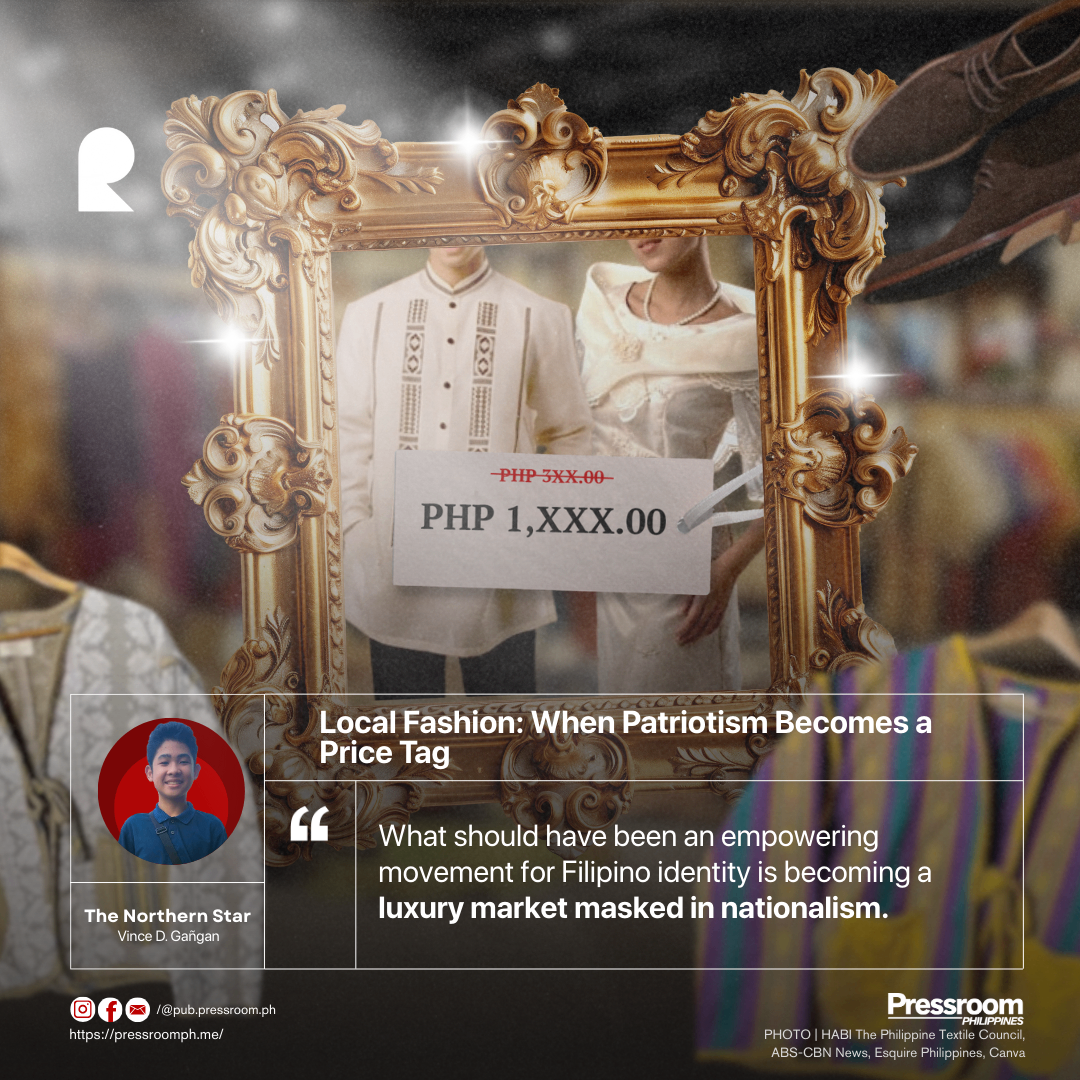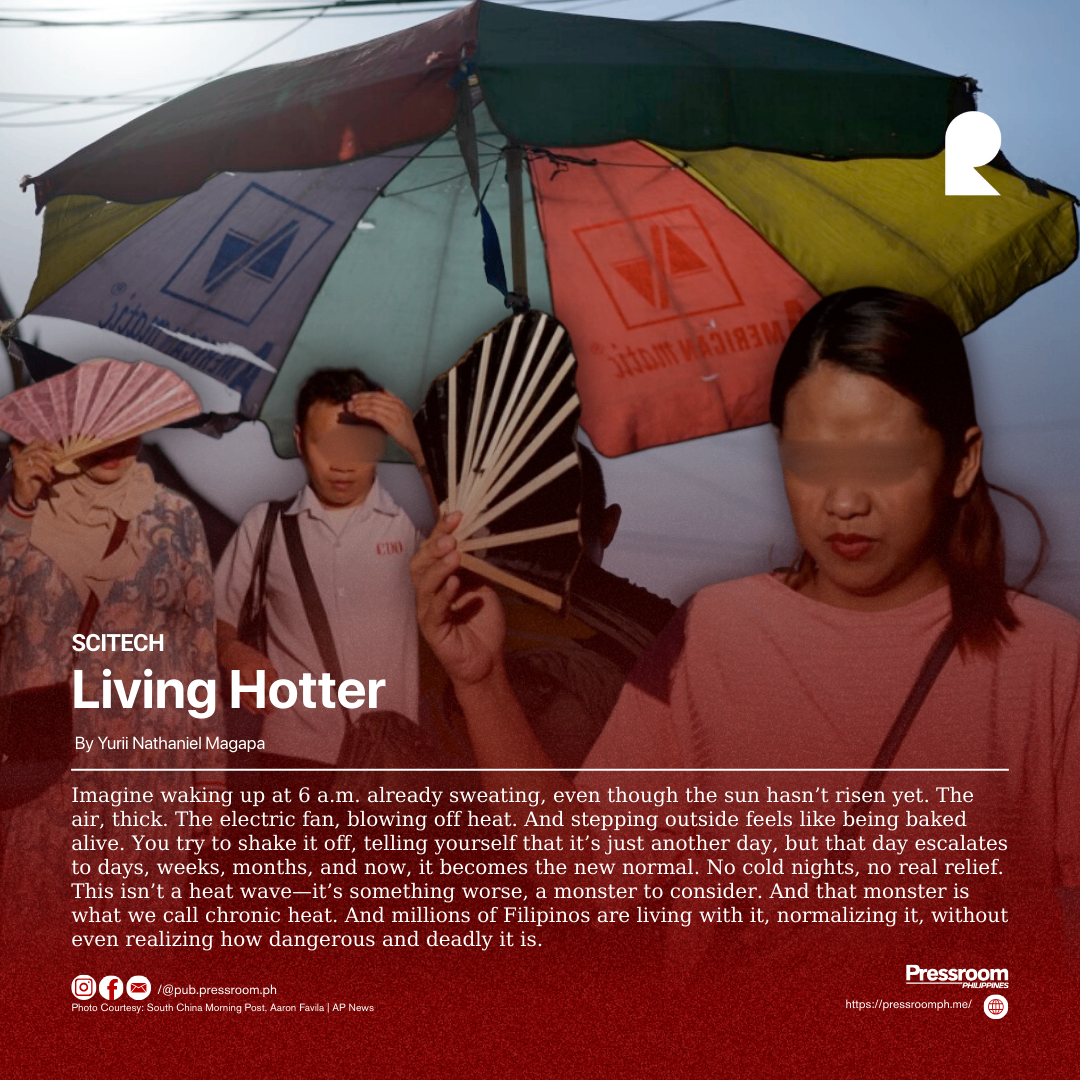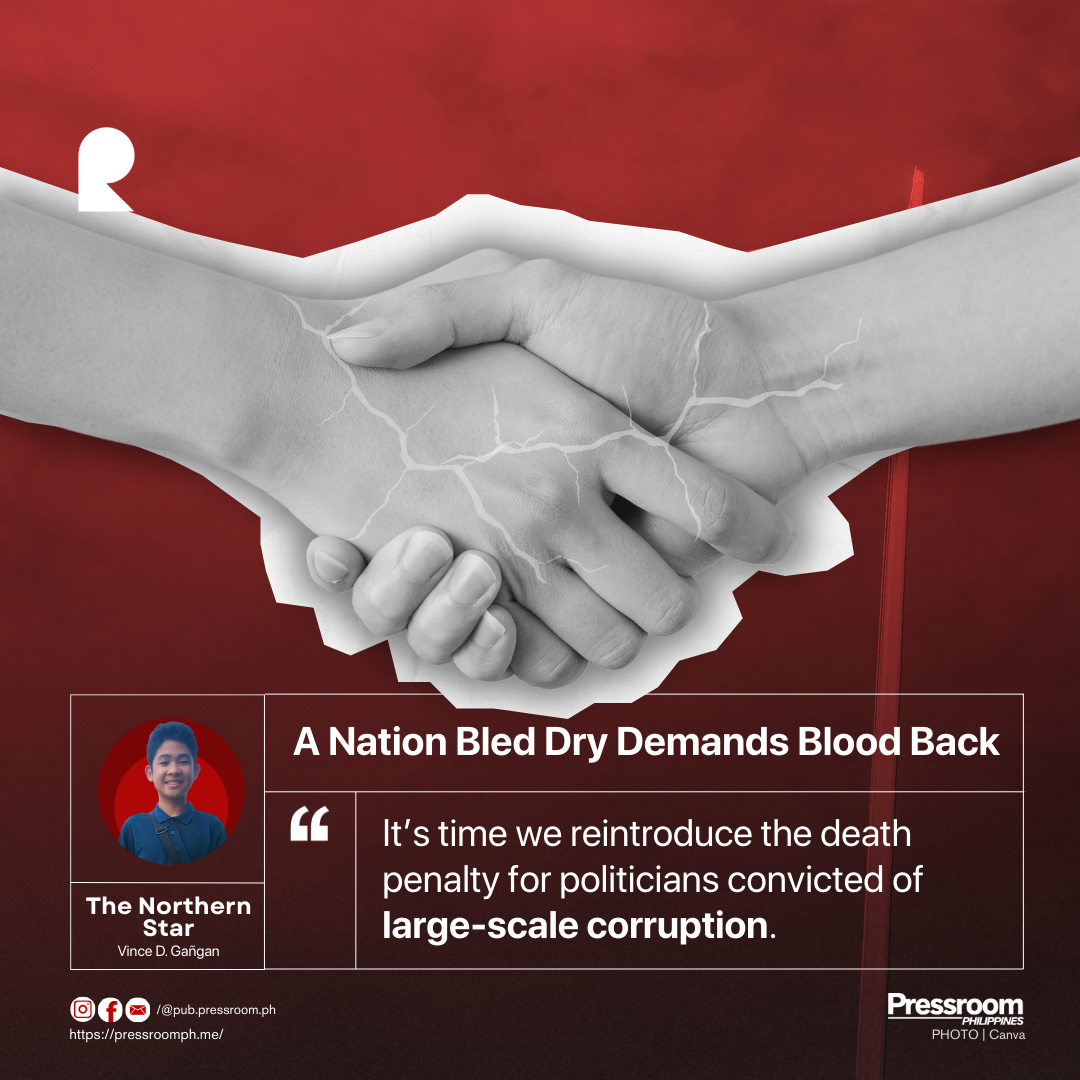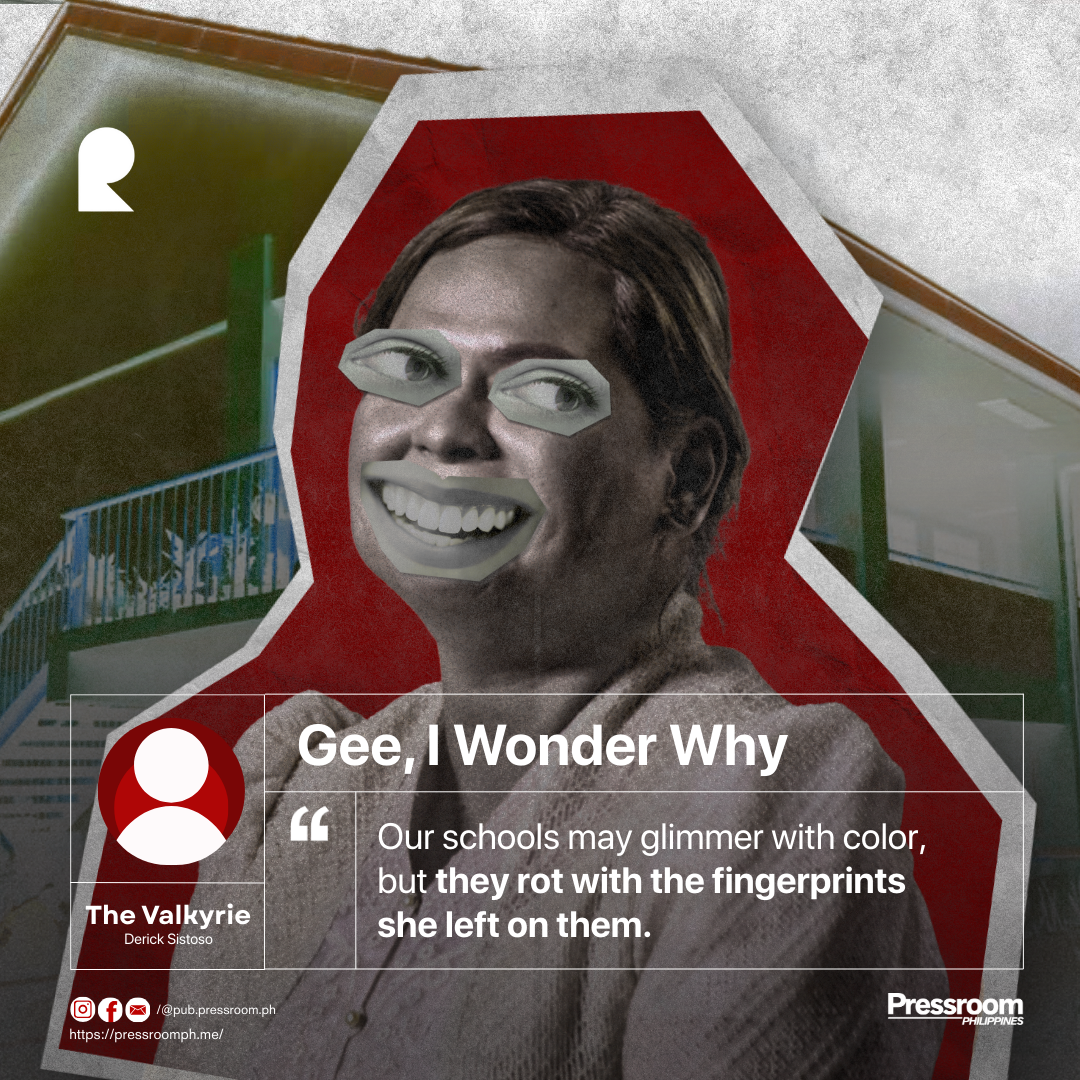𝘃𝗶𝗮 𝗩𝗶𝗻𝗰𝗲 𝗗. 𝗚𝗮ñ𝗴𝗮𝗻, 𝗣𝗿𝗲𝘀𝘀𝗿𝗼𝗼𝗺 𝗣𝗵𝗶𝗹𝗶𝗽𝗽𝗶𝗻𝗲𝘀
There is pride in wearing something Filipino. But when that pride comes with a price most Filipinos can't afford, we must question who it's really for. Local fashion today often presents itself as a symbol of national identity, yet the cost of belonging seems too steep. Patriotism, in this case, is no longer a value—it’s a transaction.
Local fashion brands promise to champion Filipino pride, but at what cost? A closer look reveals a growing disconnect between their patriotic slogans and the communities they claim to serve. What should have been an empowering movement for Filipino identity is becoming a luxury market masked in nationalism.
Across storefronts and social media, local brands echo the same message: buy local, support the Filipino. But this patriotic call is starting to sound more like a sales pitch than a shared belief. Wrapped in minimalism and Filipino motifs, these clothes are marketed as cultural statements—yet their accessibility doesn't match the inclusivity they imply.
From polos priced at ₱1,000 to shoes nearing ₱2,000, many of these “Made Pinoy, For Pinoy” labels seem out of touch with the economic realities of most Filipinos. With nearly one in five Filipinos living below the poverty line, it's difficult to justify products priced for the few, while being marketed as if they’re for the many.
Supporters argue that higher prices reflect fair wages for artisans and sustainable practices. That’s valid—but it doesn’t excuse subpar quality or shallow branding. A product can be ethical and well-made without being inaccessible. Yet, too often, local fashion is priced like luxury, without the quality to match.
The result? A growing perception that local fashion is more about status than solidarity. Cultural designs and patriotic messaging become tools for marketing, not community building. These brands appeal to national pride, but alienate the very people they claim to represent.
This isn’t just about affordability. It's about sincerity. When products are priced far beyond what the average Filipino can pay, it reveals a troubling misalignment between message and market. The language of love for country is being used to target a specific, often urban and upper-middle-class demographic. Everyone else is left applauding from the sidelines.
The irony is striking. We celebrate the Filipino worker, yet make their work financially out of reach for the communities they're part of. True pride in local craft shouldn’t require financial privilege. If only the few can afford to wear it, how can it ever represent the many?
If local fashion truly wants to uplift the Filipino spirit, it must first be accessible to the Filipino people. Patriotism should not be something you have to buy into. It should be reflected in fairness, quality, and inclusivity—not just slogans and price tags.
We need a version of local fashion that serves, not just sells. That connects, not just claims. Patriotism should not be a product line. It should be the principle behind every stitch, price, and purpose.
Until that happens, we must ask: are we celebrating Filipino craftsmanship, or just selling it back to ourselves at a markup?






